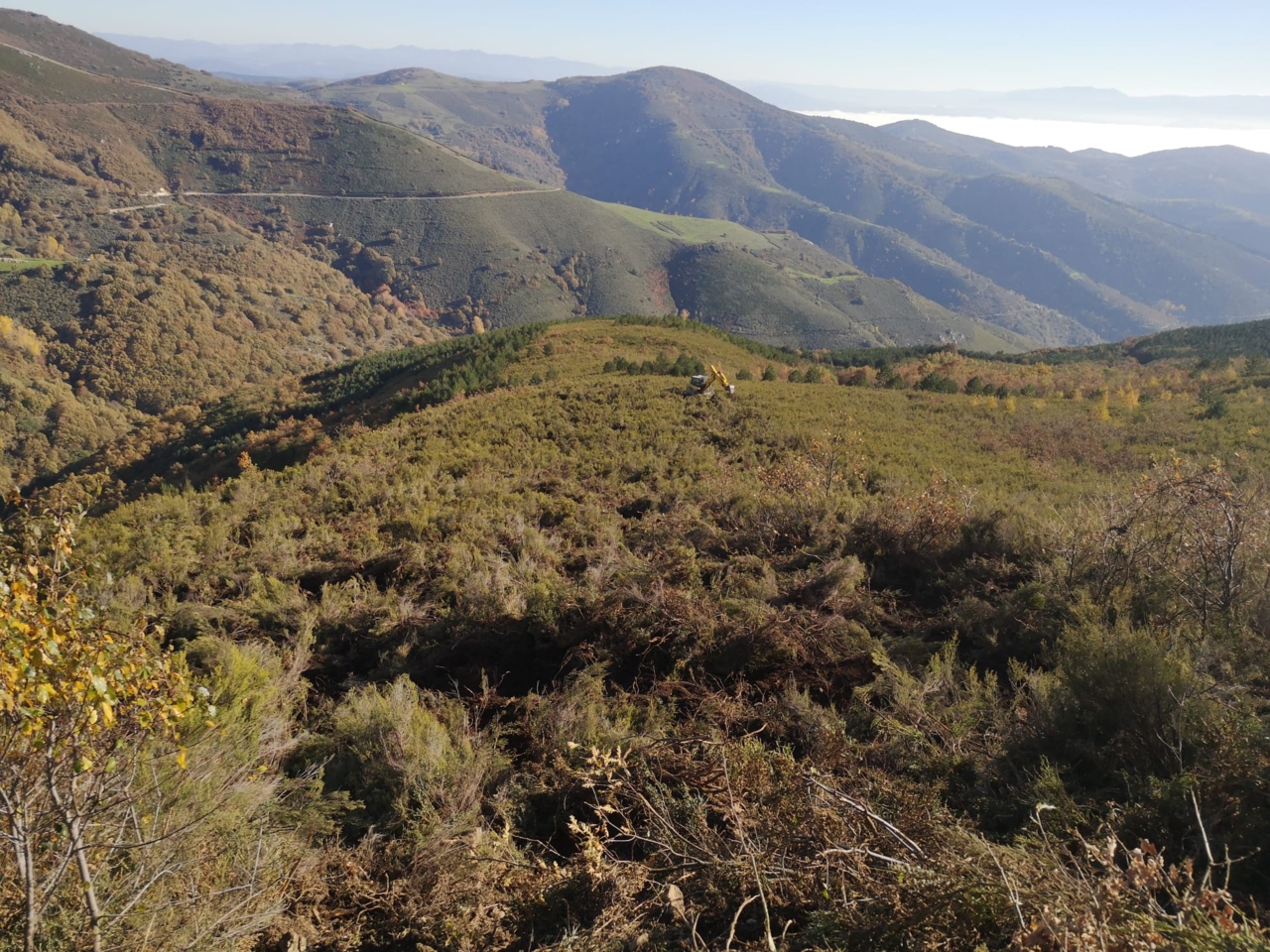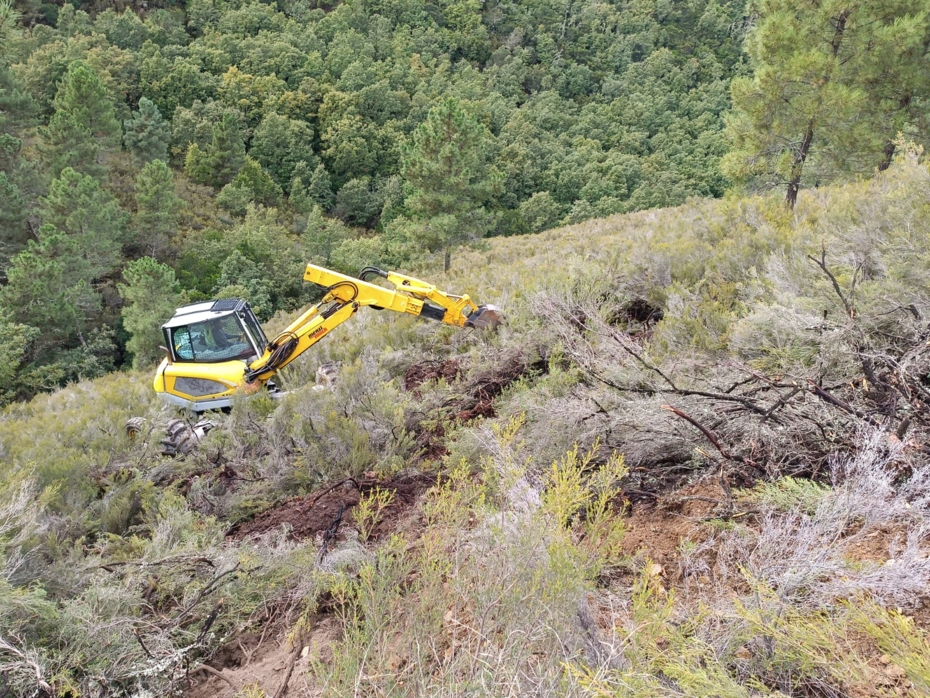Engaging and hiring local people to carry out forest restoration works using locally available machinery

Overview of a stand in El Bierzo while hole digging with a walking excavator was taking place in November 2024
The availability of heavy machinery at the restoration site might poses a logistical
challenge for example when specific equipment is unavailable or out of service or due to the weight and size of the machinery, if passage on roads, bridges and through tunnels are restricted by size or weight limitations. In such case, the implementation period can be shortened if local workforce and machinery are engaged to perform the restoration activities.
Context:
Certain restoration activities (e.g., watering, thinning, planting) can be carried out or supported by local people using their own machinery (e.g., tractors, chain-type brush cutters). In some cases, this can help address machinery shortages during work peaks or when specific equipment is unavailable or out of service.
In Spain, much of the forest restoration projects are carried out in remote areas, often in rough terrain. It is not uncommon with long transports on small and lingering roads, especially if you are using machinery and workforce from outside
the local area. However, certain restoration activities (e.g., watering, thinning, planting) can be carried out or supported by local people using their own machinery (e.g., tractors, chain-type brush cutters). In some cases, this can help
address machinery shortages during work peaks or when specific equipment is unavailable or out of service.
Problem Description:
Although uncommon, a limiting situation may arise when access to a restoration area involves passing through a tunnel (height limitation), a bridge (weight limitation), or a road whose length poses a constraint for machinery that must be transported by lorry (e.g., a walking excavator). Problems might also arise if some necessary machinery brake down, is unavailable or out of service during work peaks.
Implementation Steps:
Secure machinery and local personnel by engaging a local facilitator (fixer) who is conversant with both the restoration action needs and the local resources that could expedite work. This ensures prompt resource mobilization, serving as a backup in case of contractor machinery failure or an opportunity to shorten execution timelines through local resource integration.
Replicability:
YES, the practice has been tested and replicated in multiple contexts and scales and therefore, can be easily transferred and/or adapted to other initiatives with similar goalsIn sites with difficult access for heavy machinery, the role of a local facilitator or "fixer" can significantly enhance operational efficiency and resource mobilization.
Key Success Factors:
Availability of persons with thorough knowledge of local knowledge and active guilds.
Try to find a fixer that are well known and respected within the local
community, while at the same time handy and knowledgeable on different
kind of machinery.
- It is an advantage if the fixer is also positive and interested in the restoration project – then he or she might function as a local “ambassador” for your project.
- Make sure to compensate the fixer in some, appropriate way, for the service he or she is doing for your project. Make sure you include potential costs for “fixers” in your budget already in the beginning, if the cost is likely
to be substantial.
- Acknowledge the fixers if they are doing a good job – a fixer that feels appreciated will work harder to solve your problems.
Common Constraints:
Human Resources: The local workforce may have an advanced average age, potentially hindering their ability to perform physically demanding tasks, for example on steep slopes. This demographic challenge could restrict the pool of available labor for certain restoration actions.
Local Equipment and Machinery: Local machinery (e.g., tractors) may suffer from inadequate maintenance, posing a significant risk of downtime or breakdown during critical execution periods. This lack of reliability could compromise the project's timeline and efficiency.
Lessons Learnt:
Usually someone as a "fixer" helps in knowing the local knowledge and the machinery availability.
Positive Impacts:
- Improved societal support
The restoration activities will have a clear positive socio-economic impact, primarily by boosting the local economy. An additional benefit of incorporating local workforce and machinery is the increased operational efficiency achieved by reducing the time and resources dedicated to the logistics and transport of external heavy equipment.
Negative Impacts:
- Reduced equity: benefiting women & minorities
Random selection of people and machinery is risky and needs a thorough selection and may no promote equity between women and minorities as usually there is no a big sort of people to choose.
Media
- Implementation
- Integrative Forest Management
- Social & Stakeholder
- Landowners & Practitioners
- Planners & Implementers
- Social and cultural values
- Atlantic
- Mediterranean
- Spain
- Environmental
- 37.4


